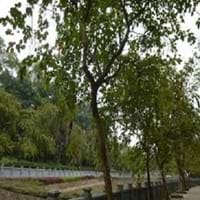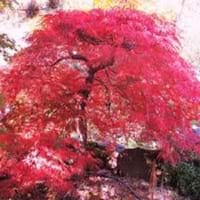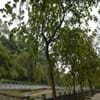Life Span
Biennial
Perennial
Origin
South-Eastern Asia, Southeastern Asia, China
Eastern Asia
Types
Purple Orchid Tree, White Orchid Tree, Bidi leaf tree
Ever red , Crimson queen
Number of Varieties
Not Available
Habitat
Forests, Mountain Slopes, Valley
Shady Edge
USDA Hardiness Zone
9-13
5-8
Sunset Zone
H1, H2, 9, 10, 11, 13, 18, 19, 20, 21, 22, 23
A3, 2a, 2b, 3a, 3b, 4, 5, 6, 7, 8, 9, 10, 12, 14, 15, 16, 17, 18, 19, 20, 21, 22, 23, 24
Habit
Upright/Erect
Arching/Fountain-shaped
Flower Color
Light Pink, Magenta, Violet
Red
Flower Color Modifier
Bicolor
Bicolor
Fruit Color
Green, Sandy Brown
Red, Green
Leaf Color in Spring
Green, Gray Green
Light Green, Lime Green
Leaf Color in Summer
Green, Gray Green
Green, Lime Green
Leaf Color in Fall
Green, Gray Green, Yellow green
Orange, Gold, Orange Red
Leaf Color in Winter
Green, Gray Green, Yellow green
Not Available
Leaf Shape
Butterfly shaped
Maple shaped
Plant Season
Spring, Summer
Spring, Summer, Fall, Winter
Sunlight
Full Sun, Partial Sun
Full Sun, Partial Sun, Partial shade
Type of Soil
Clay, Loam, Sand
Clay, Loam, Sand
The pH of Soil
Acidic, Neutral
Acidic, Neutral
Soil Drainage
Well drained
Average
Bloom Time
Early Spring, Spring
Early Spring, Spring, Late Spring, Early Summer
Tolerances
Drought
Drought
Where to Plant?
Ground
Ground
How to Plant?
Budding, Grafting, Seedlings
Transplanting
Plant Maintenance
Medium
Medium
Watering Requirements
Average Water Needs, Keep the ground moist but not water-logged, Water Deeply
Requires regular watering
In Summer
Lots of watering
Lots of watering
In Spring
Moderate
Moderate
In Winter
Average Water
Average Water
Soil pH
Acidic, Neutral
Acidic, Neutral
Soil Type
Clay, Loam, Sand
Clay, Loam, Sand
Soil Drainage Capacity
Well drained
Average
Sun Exposure
Full Sun, Partial Sun
Full Sun, Partial Sun, Partial shade
Pruning
Remove branches, Remove damaged leaves, Remove dead branches, Remove dead leaves, Remove dead or diseased plant parts
Remove damaged leaves, Remove dead branches, Remove dead leaves
Fertilizers
Apply N-P-K
All-Purpose Liquid Fertilizer
Pests and Diseases
Red blotch
Red blotch
Plant Tolerance
Drought
Drought
Flowers
Showy
Insignificant
Flower Petal Number
Single
Single
Foliage Texture
Medium
Fine
Foliage Sheen
Matte
Matte
Allergy
Not Available
Unknown
Aesthetic Uses
Not Available
Beautification, Bonsai, Landscape Designing, Showy Purposes
Beauty Benefits
Not Available
Not Available
Edible Uses
Yes
Not Available
Environmental Uses
Air purification, Nesting sites for birds, Shadow Tree
Air purification
Medicinal Uses
Carminative, Laxative
Unknown
Part of Plant Used
Buds, Flowers, Leaves, Root, Seeds, Stem
Not Available
Other Uses
Fibre, Gum, Used as a dye
Not Available
Used As Indoor Plant
No
No
Used As Outdoor Plant
Yes
Yes
Garden Design
Feature Plant, Shade Trees, Street Trees, Tropical
Container, Feature Plant, Hedges, Mixed Border, Topiary / Bonsai / Espalier
Botanical Name
BAUHINIA purpurea
ACER palmatum 'Omurayama'
Common Name
Butterfly Tree, Orchid Tree
Japanese Maple, Weeping Japanese Maple
In Hindi
Butterfly tree
Weeping Maple
In German
Schmetterlings- Baum
Weeping Maple
In French
arbre de papillon
Maple pleureur
In Spanish
árbol de la mariposa
weeping maple
In Greek
δέντρο πεταλούδα
weeping maple
In Portuguese
árvore borboleta
chorando de bordo
In Polish
drzewo Butterfly
płacz klonu
In Latin
Gloria ligno
weeping maple
Phylum
Magnoliophyta
Angiosperms
Class
Magnoliopsida
Eudicotyledones
Family
Fabaceae
Aceraceae
Clade
Angiosperms, Eudicots, Rosids
Not Available
Tribe
Cercideae
Not Available
Subfamily
Caesalpinioideae
Not Available
Number of Species
Not Available
Importance of Butterfly Tree and Weeping Maple
Want to have the most appropriate plant for your garden? You might want to know the importance of Butterfly Tree and Weeping Maple. Basically, these two plants vary in many aspects. Compare Butterfly Tree and Weeping Maple as they differ in many characteristics such as their life, care, benefits, facts, etc. Every gardener must at least have the slightest clue about the plants he wants to plant in his garden. Compare their benefits, which differ in many ways like facts and uses. The medicinal use of Butterfly Tree is Carminative and Laxative whereas of Weeping Maple is Unknown. Butterfly Tree has beauty benefits as follows: Not Available while Weeping Maple has beauty benefits as follows: Not Available.
Compare Facts of Butterfly Tree vs Weeping Maple
How to choose the best garden plant for your garden depending upon its facts? Here garden plant comparison will help you to solve this query. Compare the facts of Butterfly Tree vs Weeping Maple and know which one to choose. As garden plants have benefits and other uses, allergy is also a major drawback of plants for some people. Allergic reactions of Butterfly Tree are Not Available whereas of Weeping Maple have Unknown respectively. Having a fruit bearing plant in your garden can be a plus point of your garden. Butterfly Tree has no showy fruits and Weeping Maple has no showy fruits. Also Butterfly Tree is not flowering and Weeping Maple is not flowering . You can compare Butterfly Tree and Weeping Maple facts and facts of other plants too.





